Cosmic Curiosities
“Who knows the power that Saturn has over us, or Venus? But it is a vital power, rippling exquisitely through us all the time.”
- D. H. Lawrence, English Writer
Lovely and Lethal Venus
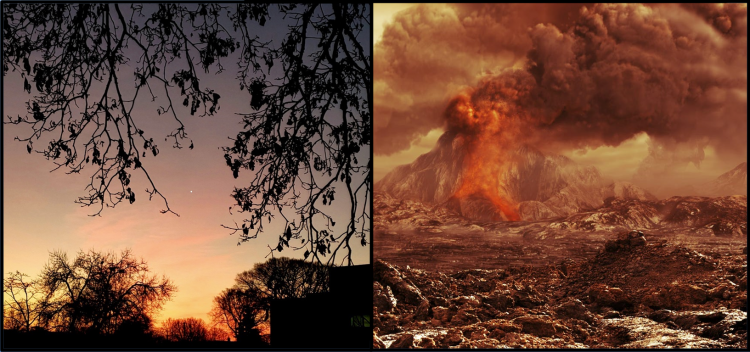
Venus is perplexing. On one hand, its striking brilliance in the night sky is unmatched by the other planets and stars. On the other side, Venus up close is a scary hot and noxious world.
Like today, long ago stargazers marveled at Venus and were inspired. Only the moon outshines Venus at night—and not all the time. When the Moon is a thin crescent, dazzling Venus is brighter and more noticeable.
Being so bright, it was prominent in cultural sky records. Without any way to investigate this sky object closer, we can see why Venus becomes a god or goddess with great powers.
In Roman mythology, Venus was the goddess of love and beauty. They borrowed many of these traits from the Greeks, who know her as Aphrodite. The Sumerians’ and Babylonians’ name was Inanna, or Ishtar, where a dual role was cast as goddess of both love and war—residing over birth and death.
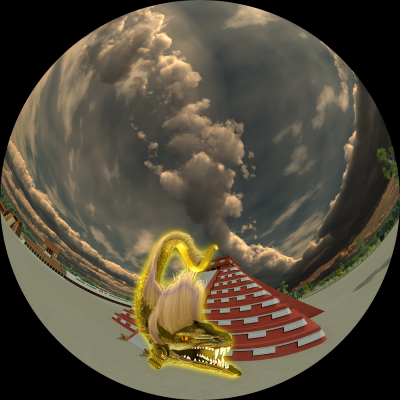
Venus is often called both the morning star and evening star, depending on its orbit position relative to Earth. Venus can appear before sunrise in the morning, or after sunset in the evening. Being closer to the Sun than Earth, Venus can never be up all night or reach the top of the sky. Therefore, many cultures saw Venus as two separate gods depending on the time of night.
In 1610, our perception of Venus started to change. The telescope had arrived and Galileo’s observations made him realize that Venus goes through phases like the Moon. This—and other discoveries—led him to argue the Earth was not the center of the solar system.
Though telescopes improved, observations kept seeing clouds covering the planet. Since no surface features could be seen, scientists and science fiction writers imagined all sorts of worlds here—many with fanciful life forms. Venus could be covered with one big ocean, be swampy and tropical, or even be a hot desert.
Soon astronomers learned to look beyond visible light. In 1932, infrared studies showed carbon dioxide was the primary composition of the clouds of Venus. Eventually, observations in the microwave portion of the spectrum in the 1950s led to evidence of high surface temperatures on the planet via the greenhouse effect theory, where carbon dioxide traps the sun’s heat like a greenhouse. Carl Sagan, then a young scientist, led these high-temperature theories for Venus.
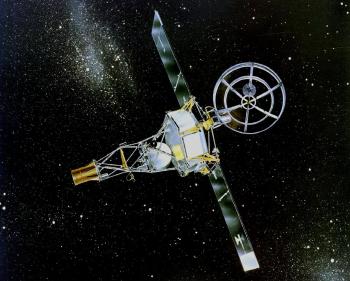
Speculations still persisted that the clouds of Venus kept it cooler, like here on Earth. Space exploration changed this fantasy starting in 1962, when NASA’s Mariner 2 became the first spacecraft to visit this sweltering world. On December 14, Mariner 2 flew by our neighboring planet, measuring surface temperatures around 400°F and an atmospheric pressure at 20 times greater than on Earth.
Future spacecrafts would measure even higher temperatures and pressures. Today, NASA lists the temperature at 872°F and air pressure at 1,350 pounds per square inch (psi). That amount of pressure is the same as being 3,000 feet underwater on Earth.
Just a month ago, NASA announced they are going back to this lovely and lethal world. They selected two new missions to help us understand how Venus became this scorching neighbor of ours after starting out more like an early Earth. Some scientists even speculate life started on Venus and that it was the first habitable world in the solar system.
The selected missions are DAVINCI+ (Deep Atmosphere Venus Investigation of Noble gases, Chemistry, and Imaging) and VERITAS (Venus Emissivity, Radio Science, InSAR, Topography, and Spectroscopy). Each spacecraft is expected to launch in the 2028-2030 timeframe.
Astronaut Thoughts
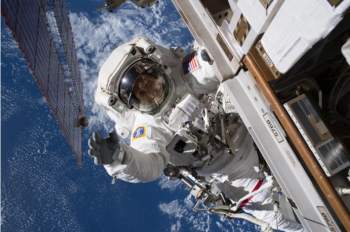 “Have you ever been in space? Would you like to go someday? How much are you willing to pay?”
“Have you ever been in space? Would you like to go someday? How much are you willing to pay?”
I get these astronaut questions from time to time. I usually give fairly short answers, but thought I’d expound on some of these space-travel inquiries.
Have you ever been in space?
Sometimes, I will say to this one, “Yes, and so have you!” If I get a perplexed reaction, I add that we all live on a planet, Earth, that is orbiting the sun in a galaxy we call the Milky Way—so we are all in space. Their eyes may roll at my response. Of course, the spirit of the question is: Have you ever ridden in a rocket that has travelled above the atmosphere. Are you an astronaut?
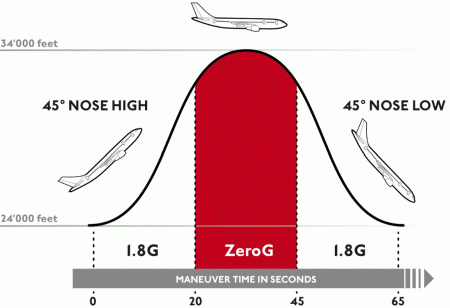 I am not an astronaut. That is a pretty select group. Only 553 people have flown into space in the past 60 years. The number is growing. I have taken the zero-gravity flight aboard an airplane. We did 15 parabolic maneuvers to get us weightless for about 25 seconds each time. It was a wild experience to drop an apple and not see it fall to the floor of the plane. Isaac Newton would be speechless.
I am not an astronaut. That is a pretty select group. Only 553 people have flown into space in the past 60 years. The number is growing. I have taken the zero-gravity flight aboard an airplane. We did 15 parabolic maneuvers to get us weightless for about 25 seconds each time. It was a wild experience to drop an apple and not see it fall to the floor of the plane. Isaac Newton would be speechless.
Would you like to go someday?
Sure, I would love to fly into space someday; to see our planet Earth from orbit would surely leave me speechless (which isn’t easy to do!).
Seriously, I feel if we all could see our planet as one world, we would find more ways to take care of our world, our only home.
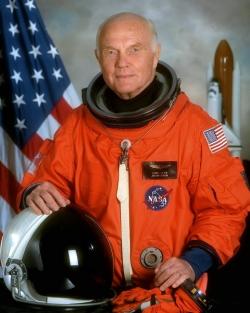 I think my astronaut option is growing pretty thin. However, John Glenn, the first American to orbit the Earth in 1962, did fly aboard the Space Shuttle in 1998 at the age of 77. I am starting to look more like him!
I think my astronaut option is growing pretty thin. However, John Glenn, the first American to orbit the Earth in 1962, did fly aboard the Space Shuttle in 1998 at the age of 77. I am starting to look more like him!
How much are you willing to pay?
On our zero-G flight, I was fortunate to go as part of an educational grant. We took six high school students from right here in Milwaukee. Generally, the cost is about $5,000 for anyone to take this flight. That is pretty expensive for most people—especially for being weightless for only about 7 minutes or so. Still, it was pretty awesome!
Space tourism will start again this month with Amazon founder Jeff Bezos scheduled to take a suborbital flight on July 20, the 52nd anniversary of Neil Armstrong’s first steps on the Moon. One tourist is paying $28 million dollars for this short, 11-minute dash into space.
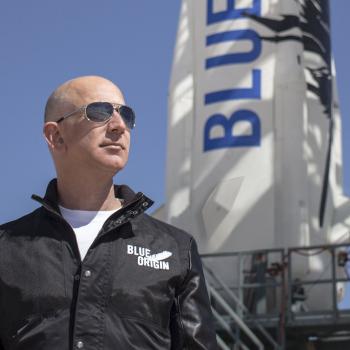 The Russian space agency plans to launch tourists to the International Space Station (ISS) this fall.
The Russian space agency plans to launch tourists to the International Space Station (ISS) this fall.
In January 2022, three people are shelling out $55 million each to fly in SpaceX’s Crew Dragon to the ISS. This is a totally private crew led by a veteran NASA astronaut who will serve as the commander and is not paying for the eight-day trip. This Ax-1 mission was arranged by an American company Axiom Space.
Elon Musk, head of SpaceX, plans on taking tourists to the Moon in the near future.
Virgin Galactic’s Richard Branson might fly, too—over the July 4 weekend. He is trying to beat Mr. Bezos into space!
Speed of Fireworks
 If you happen to be watching fireworks this July 4 weekend, you may wonder how fast these pyrotechnics go as they scurry up into the sky. Do they go quickly enough—high enough—to reach orbit?
If you happen to be watching fireworks this July 4 weekend, you may wonder how fast these pyrotechnics go as they scurry up into the sky. Do they go quickly enough—high enough—to reach orbit?
You may recall that the rockets that take astronauts into orbit have to go five miles per second. To escape Earth’s gravity all together and go to the moon, a rocket needs to go 7 miles per second, or 25,000 miles per hour.
Fireworks: How fast do they go? Not very, it turns out. Their speed depends on their size, but an average large fireworks shell goes about 1/10 of a mile per second. That’s more than 300 miles an hour, but not fast enough to get anywhere near space. Still—obviously—fireworks are fast and explosive, so be careful if you are ever close.
The bigger fireworks travel about 1,000 feet high, or 1/5 of a mile. That is a bit short from where space starts at 62 miles high—or 100 kilometers.
Sky Sights
Click maps to enlarge.
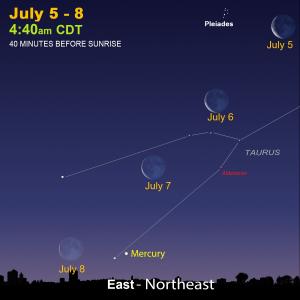 A waning crescent Moon passes little Mercury for early risers in early July.
A waning crescent Moon passes little Mercury for early risers in early July.
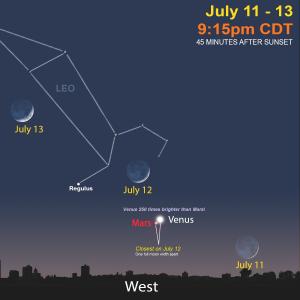 Mars and Venus will make a very close conjunction on July 12. They are 0.5 degrees apart, or the width of the full moon. Step outside after sunset and look low in the west.
Mars and Venus will make a very close conjunction on July 12. They are 0.5 degrees apart, or the width of the full moon. Step outside after sunset and look low in the west.
Venus will be more than 200 times brighter than Mars, so spotting the red planet in the glare of scorching Venus will not be easy. The Moon will join the sky show with our neighbor from July 11-13.
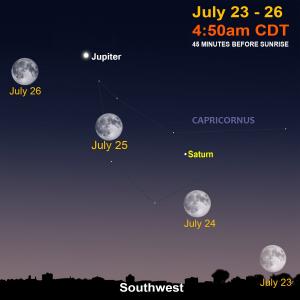 Jupiter and Saturn are moving more and more into the evening sky, rising a few hours after sunset for the night owls. In the pre-dawn skies, observe the gas-giant planets in the southwest. By July 30, Saturn rises around 8:20 p.m. and Jupiter by 9:15 p.m. Our Moon passes by from July 23-26. The full moon is on the night of July 23.
Jupiter and Saturn are moving more and more into the evening sky, rising a few hours after sunset for the night owls. In the pre-dawn skies, observe the gas-giant planets in the southwest. By July 30, Saturn rises around 8:20 p.m. and Jupiter by 9:15 p.m. Our Moon passes by from July 23-26. The full moon is on the night of July 23.
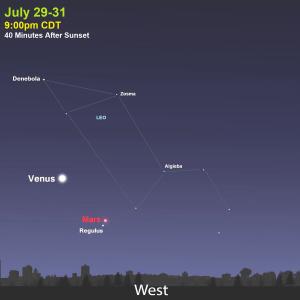 By the end of the month, Mars and Venus have separated. The red planet will be even harder to see as it races to line-up behind the sun. Try to catch it shining near the bright star Regulus in Leo the Lion.
By the end of the month, Mars and Venus have separated. The red planet will be even harder to see as it races to line-up behind the sun. Try to catch it shining near the bright star Regulus in Leo the Lion.
July Star Map
Sign Up
Receive this newsletter via email!
Subscribe
See the Universe through a telescope
Join one of the Milwaukee-area astronomy clubs and spot craters on the Moon, the rings of Saturn, the moons of Jupiter, and much more.
Follow Bob on social media
Twitter: @MPMPlanetarium
Facebook: Daniel M. Soref Planetarium

